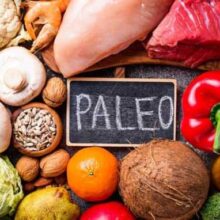What Happens When Ice Cream Refuses to Melt? A Mother’s Eye-Opening Experiment
In today’s world, where convenience often trumps quality, a growing number of consumers are starting to question what exactly goes into the food they eat. This surge of awareness isn’t just about counting calories or cutting down on sugar; it’s about uncovering the truth behind the ingredients list on the back of our favorite treats. It’s about understanding the impact these ingredients have on our health and well-being. Amidst this wave of curiosity, a story that captures the essence of our collective concern recently unfolded, involving a mother and well-known social media influencer, Ebonie Marie Baxter.
Ebonie’s simple experiment with a seemingly innocuous Walmart ice cream sandwich left not just her, but her vast following, in sheer disbelief. Leaving the ice cream sandwich out for 12 hours only to find it hadn’t melted sparked a much-needed conversation about what we’re actually consuming under the guise of food. This incident serves as a poignant entry point into a broader discussion about food quality, the hidden dangers lurking in processed foods, and the importance of making informed choices about what we feed ourselves and our families.
As we journey through this story, let’s stay open-minded and let our curiosity lead the way. It’s not just about one ice cream sandwich; it’s about a systemic issue that affects much of what sits on our supermarket shelves. Through understanding, exploration, and a bit of investigative zeal, we can navigate towards choices that not only satisfy our taste buds but also nourish our bodies. Join us on this journey of discovery, where every ingredient is scrutinized, and every bite counts towards a healthier, more informed lifestyle.
The Experiment by Ebonie Marie Baxter
Ebonie Marie Baxter, a name familiar to many in the online community, took to social media to share an experiment that quickly captured the attention of her 336,000 Facebook followers and the wider audience of her popular YouTube channel, The Baxter Boys. Known for sharing insights into her family’s daily life, Ebonie ventured into a different kind of content that day, one that would spark widespread intrigue and concern.
The experiment was simple yet profound. Ebonie placed a Great Value Brand ice cream sandwich from Walmart on her counter and observed it for 12 hours. The expectation? That it would melt, as any standard ice cream would under room temperature conditions. However, the result was anything but expected. Twelve hours passed, and the ice cream sandwich retained its shape, barely melting at all. This startling discovery led Ebonie to question whether it was appropriate to call this product “ice cream” anymore.
Her post, accompanied by images of the untouched ice cream sandwich, resonated deeply with her audience. “Makes me sick just thinking what the ‘ice cream’ is doing through the digestive system,” Ebonie commented, her words echoing the unease felt by many who viewed her experiment. The sentiment was clear: if something as simple as ice cream doesn’t behave as it naturally should, what does that say about the food industry’s standards and the ingredients being used?
This experiment, while focused on a single product, opens up a broader dialogue about the food we consume daily. Ebonie’s experience catalyzes this discussion, urging us to look closer at the ingredients that make up our favorite treats and question the potential impact on our health.
What’s in Your Ice Cream?
The experiment conducted by Ebonie Marie Baxter sheds light on a pressing issue: the complex and often perplexing ingredients found in many of the processed foods available on supermarket shelves, including ice cream. The Great Value Brand ice cream sandwich that remained unmelted after 12 hours contains a long list of ingredients, some of which raise eyebrows regarding their health implications.
Sugar and Corn Syrup: Common in many processed foods, these ingredients contribute to the sweet taste but come with health risks such as obesity, diabetes, and heart disease when consumed in excess.
Cellulose Gum, Tara Gum, and Carrageenan: Used as thickeners and stabilizers, these ingredients help maintain the shape and texture of ice cream. While generally recognized as safe, carrageenan has been linked to digestive issues in some studies.
Mono-and-Diglycerides: These emulsifiers keep oil and water from separating, ensuring a consistent texture. Although derived from fatty acids, they’re considered safe in small amounts but still raise questions about their necessity in our diet.
Caramel Color and Dextrose: Additives for color and sweetness. Caramel color, in particular, has been scrutinized for containing potentially harmful compounds.
The presence of these ingredients in a product labeled as “ice cream” is concerning not only because of their potential health effects but also because it highlights the vast difference between natural, wholesome foods and their processed counterparts. The fact that an ice cream sandwich can withstand 12 hours at room temperature without melting indicates a departure from what many would consider being “real” ice cream, which traditionally consists of milk, cream, sugar, and perhaps natural flavorings.
This revelation invites us to question the broader implications of consuming foods laden with artificial and lab-created ingredients. What are the long-term health consequences of a diet heavy in processed foods? How do these ingredients affect our body’s natural functions and overall well-being?
As consumers, it’s crucial to become more informed about the ingredients in our food. Understanding the impact of each component can empower us to make choices that align more closely with a healthy, balanced diet. This knowledge encourages us to seek out products that contain simple, natural ingredients and to be mindful of the potential effects of those that read more like a chemistry experiment than a recipe.
The Case for Organic and Non-GMO Ice Cream
In light of the concerns raised by processed and artificially enhanced foods, there’s a growing movement towards organic and non-GMO (genetically modified organisms) products. This shift is particularly relevant in the realm of ice cream, where the difference between natural ingredients and lab-created substitutes can significantly impact both health and taste.
Why Choose Organic and Non-GMO?
Health Benefits: Organic ice cream is made from milk produced by cows that graze on organic feed and are not treated with synthetic hormones or antibiotics. This not only supports animal welfare but also reduces your exposure to potential toxins.
Environmental Impact: Organic farming practices are designed to reduce pollution and conserve water and soil, making organic ice cream a more sustainable choice.
No Genetic Modification: Non-GMO ice cream ensures that all ingredients used, including fruits, nuts, and sweeteners, are not genetically altered, keeping them as close to their natural state as possible.
Understanding Food Labels
Navigating the world of organic and non-GMO labels can be daunting, but it’s a crucial step in making informed food choices. Look for certifications like the USDA Organic seal and the Non-GMO Project Verified butterfly. These labels indicate that the product meets strict standards for organic and non-GMO ingredients.
The Importance of Knowing Where Your Food Comes From
Beyond labels, understanding the source of your food can enhance your connection to what you eat, leading to more mindful eating practices. Knowing that your ice cream is made with organic milk from a local farm, for example, can add an extra layer of appreciation and enjoyment to every bite.
In transitioning towards organic and non-GMO ice cream, you’re not just choosing a healthier option for yourself and your family; you’re also supporting farming practices that are better for the planet. Our discussion so far has highlighted the importance of making such conscious choices in our daily lives, emphasizing that what we eat extends beyond personal health to the health of our environment.
Healthier Ice Cream Alternatives
Given the concerns associated with conventional ice cream products, exploring healthier alternatives becomes essential. Fortunately, the market has responded to consumer demand for more wholesome options, offering a variety of organic and non-GMO ice cream brands. These alternatives not only satisfy the sweet tooth but also align with a more conscious and healthy lifestyle.
Recommended Healthier, Organic Ice Cream Brands:
Alden’s Organic: Known for its commitment to organic ingredients, Alden’s offers a wide range of ice cream flavors that are both delicious and free from artificial additives. Their products are USDA Organic certified, ensuring that you’re enjoying ice cream made from clean, natural ingredients.
365 Brand from Whole Foods: Whole Foods Market’s in-house brand, 365, is synonymous with quality and affordability. Their organic ice cream selections are made with non-GMO ingredients, catering to those who seek the assurance of the Non-GMO Project Verified label.
SoDelicious Brand Coconut Milk (Non-GMO) Ice Cream Sandwiches: For those looking for dairy-free options, SoDelicious provides a fantastic alternative. Their coconut milk-based ice cream sandwiches are not only non-GMO but also vegan, catering to a wide range of dietary preferences without compromising on taste.
The Advantages of Choosing Healthier Ice Cream Options:
Nutritional Value: Healthier ice cream alternatives often contain less artificial sugar and more natural ingredients, which can contribute to a better nutritional profile.
Dietary Inclusivity: Many organic and non-GMO brands offer gluten-free, dairy-free, and vegan options, making it easier for people with dietary restrictions to enjoy a treat without worry.
Flavor Integrity: With a focus on natural ingredients, these healthier options frequently offer more authentic and rich flavors, allowing the real taste of vanilla, chocolate, and other ingredients to shine through.
Incorporating these healthier ice cream alternatives into your diet doesn’t mean sacrificing flavor for nutrition. Instead, it represents a conscious choice to indulge in a way that’s both satisfying and aligned with a lifestyle that values health and sustainability. By choosing brands that prioritize organic and non-GMO ingredients, consumers can enjoy their favorite desserts while supporting practices that benefit both their bodies and the environment.
Make Your Ice Cream at Home
For those who prefer to take control of what goes into their food, making ice cream at home is an excellent alternative. It’s not only a fun activity but also ensures that you’re consuming only natural, wholesome ingredients. Here’s a simple guide to creating your own healthy ice cream, using organic and ketogenic-friendly ingredients, to enjoy a delicious treat without the guilt.
Basic Recipe for Homemade Organic Keto Ice Cream:
Ingredients:
2 cups of organic heavy cream (for a dairy-free version, use full-fat coconut milk)
1/3 cup of monk fruit sweetener (a natural, low-glycemic sweetener)
1 teaspoon of pure vanilla extract
A pinch of sea salt
Optional: Add-ins like organic nuts, berries, or dark chocolate chips
Instructions:
Mix Ingredients: In a large bowl, whisk together the heavy cream, monk fruit sweetener, vanilla extract, and sea salt until well combined.
Chill: Pour the mixture into an ice cream maker and churn according to the manufacturer’s instructions, usually about 20-25 minutes.
Add-Ins: In the last few minutes of churning, add in your choice of nuts, berries, or chocolate chips.
Freeze: Transfer the ice cream to a freezer-safe container and freeze for at least 2 hours to firm up.
Serve: Enjoy your homemade, organic keto ice cream as a healthy treat!
Benefits of Making Ice Cream at Home:
Control Over Ingredients: You can ensure that only organic, non-GMO, and wholesome ingredients are used, avoiding artificial additives and preservatives.
Customization: Homemade ice cream allows you to experiment with flavors and add-ins, creating unique combinations that suit your taste preferences.
Nutritional Advantage: By selecting your ingredients, you can make healthier choices, such as using natural sweeteners and organic dairy, to fit your dietary needs.
Making your own ice cream is a delightful way to indulge in a sweet treat while maintaining a healthy lifestyle. It empowers you to choose quality ingredients and tailor your desserts to your nutritional goals. Whether you’re following a ketogenic diet, seeking organic options, or simply aiming for a healthier lifestyle, homemade ice cream offers a versatile and satisfying solution.
A Scoop of Mindfulness: Embracing Healthier Ice Cream Choices
Embarking on a journey to healthier eating doesn’t mean you have to forsake the joys of indulging in a creamy, delicious ice cream. The experiment conducted by Ebonie Marie Baxter serves as a vivid reminder of the importance of being mindful about the food we consume. It’s a call to action for consumers to look beyond the label, questioning not just the nutritional content but the very ingredients that make up our favorite treats.
The options and alternatives provided herein—from selecting organic and non-GMO brands to making your own ice cream at home—highlight a broader movement towards a more conscious and sustainable approach to eating. By choosing healthier ice cream alternatives, we not only cater to our own well-being but also support farming practices that are kinder to our planet.
This exploration into the world of healthier ice cream options is more than just a guide to better eating habits; it’s a testament to the power of informed choice. It shows that with a little creativity and a commitment to quality, it’s possible to enjoy the foods we love in a way that’s both satisfying and aligned with our health goals.
As we continue to navigate the complexities of modern food production and consumption, let’s take the lessons learned from Ebonie’s experiment to heart. Let’s commit to being more inquisitive, more discerning, and more proactive in our pursuit of a diet that nourishes not just our bodies but also our souls. After all, a healthy lifestyle is about balance, and there’s always room for a scoop of ice cream—especially when it’s as good for you as it is delicious.
The post What Happens When Ice Cream Refuses to Melt? A Mother’s Eye-Opening Experiment appeared first on Healthy Holistic Living.












